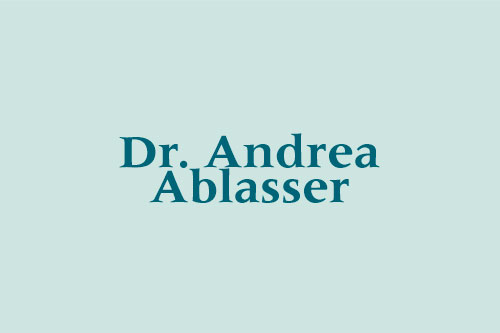- GU Home
- Paul Ehrlich Foundation
- Early Career Award
- Early Career Award 2014
Prize Winner of the Paul Ehrlich and Ludwig Darmstaedter Early Career Award 2014

Role of DNA sensors in innate immunity
The €60,000 Paul Ehrlich and Ludwig Darmstaedter Prize for Young Researchers was awarded 2014 to Dr. Andrea Ablasser, an immunologist working in Bonn. Ablasser, a medical doctor, received the prize because, as the Scientific Council of the Paul Ehrlich Foundation stated, "her research shows how the immune system identifies viruses and bacteria." The award will be presented today, the 160th birthday of Paul Ehrlich, by Professor Harald zur Hausen in the Paulskirche, Frankfurt.
The mammalian immune system comprises both innate and adaptive immune defenses. The innate immune defense system identifies invaders by their specific patterns or molecular signatures. On initial contact, the innate immune system gathers information on the type and context of the threat so that it can trigger an immune response that is specifically tailored to the danger presented. Viruses are among the most common invaders. Viruses bring DNA or RNA with them and they are difficult to identify because, beside these nucleic acids, they otherwise carry very little "baggage". "Viral DNA is recognized as foreign mainly because it appears at the wrong place in the cell," says Andrea Ablasser. "In other words, outside the cell nucleus." The DNA's presence is "picked up" there by sensors that are specialized in detecting DNA from different pathogens, e.g., viruses. Depending on which sensor responds, the immune system receives initial information as to the identity of the invader.
Ablasser, who is currently Head of a Junior Research Group at the Institute of Clinical Chemistry and Clinical Pharmacology at the University of Bonn, has worked on various DNA sensors and has discovered a novel 2nd messenger molecule, which is being produced by one of these DNA sensors. The young scientist has made a name for herself with numerous prestigious publications.
One of the DNA sensors Ablasser has been working on activates a nanomachine that produces suitable messengers for an appropriate immune response. This particular sensor reacts to poxviruses and listeria. Another DNA sensor that Ablasser has discovered ensures that the genes necessary for a specific antiviral immune response are activated. For instance, it reacts to Epstein Barr viruses. A third DNA sensor recognizes a number of different viruses and possibly also some bacteria. It informs neighboring cells about the imminent threat and is helped in this job by an unconventional messenger that Ablasser has identified. This unconventional messenger is passed through specialized channels into adjacent cells and puts them on alert. These cells then prepare to fend off the attack even though they have not come in direct contact with the invader. "The whole thing is not unlike an advance warning system," explains Ablasser. "That's how the infected cells prevent the invader from spreading." The prize-winner's research has great significance for medicine. The better scientists understand how the innate immune system gathers information about the type and context of a threat, the more effective the treatments for autoimmune diseases. In autoimmune diseases, the immune system does not distinguish correctly between "self" and "non-self". Ablasser's research contributes to developing better vaccines for immunotherapy, for instance in the treatment of cancer.
Short biography of Dr. Andrea Ablasser
Andrea Ablasser (born 1983) studied medicine at the Ludwig Maximilians University in Munich, where she also completed her doctorate in 2010. In 2006 and 2008 she spent a number of months at the University of Massachusetts in Worcester. Ablasser did her clinical training at the Ludwig Maximilians University in Munich and spent parts of her practical year at Oxford University and at Harvard Medical School. Ablasser has been doing research at the Institute of Clinical Chemistry and Clinical Pharmacology at the University of Bonn, latterly as Head of a Junior Research Group. She will soon take up a professorship at the Federal Institute of Technology Lausanne (EPFL). Ablasser has already published 16 articles in highcaliber journals, three of them in Nature in the last year alone. The Young Researcher prizewinner was awarded the Jürgen Wehland Prize just a few weeks ago.

- Opening speech Prof. zur Hausen, Stiftungsratsvorsitzender
- Welcome Becker, Stadtkämmerer
- Short speech Widmann-Mauz, Parlamentarische Staatssekretärin
- Short Speech Rhein, Hessischer Minister Wissenschaft und Kunst
- Laudatio Prof. Diefenbach, Universität Mainz
- Acceptance speech Dr. Andrea Ablasser
- Speech Hausen
- Opening speech Prof. zur Hausen, Stiftungsratsvorsitzender
- Welcome Becker, Stadtkämmerer
- Short speech Widmann-Mauz, Parlamentarische Staatssekretärin
- Short Speech Rhein, Hessischer Minister Wissenschaft und Kunst
- Laudatio Prof. Diefenbach, Universität Mainz
- Acceptance speech Dr. Andrea Ablasser
- Speech Hausen

CONTACT
Office Paul Ehrlich Foundation:
Friends of the Goethe University Frankfurt
Goethe-Universität Frankfurt
Campus Westend, PA-Gebäude
Theodor-W.-Adorno-Platz 1
60629 Frankfurt am Main
www.vff.uni-frankfurt.de
Managing Directors
Nike von Wersebe
Tel: 069 / 798 12234
Fax: 069 / 798 763 12234
wersebe@vff.uni-frankfurt.de
Julia Lange
Tel: 069 / 798 12452
Fax: 069 / 798 763 12452
E-Mail: lange@vff.uni-frankfurt.de
Adviser for Members & Foundations
Tina Faber
Tel: 069 / 798 17237
Fax: 069 / 798 763 17237
faber@vff.uni-frankfurt.de
Marketing
Constanze von Plato
Tel: 069 / 798 17237
Fax: 069 / 798 763 17237
vonplato@vff.uni-frankfurt.de
Science Communication
Joachim Pietzsch
Tel: 069 36007188
j.pietzsch@wissenswort.com
Bank Account
Paul Ehrlich-Stiftung
Deutsche Bank AG
IBAN: DE38500700100700083900
BIC: DEUTDEFFXXX
Donations are tax deductible.
- Studying at Goethe University
- International applicants
- Faculties
- Overview of study programmes
- Programme for refugees
- GRADE
- Goethe Business School (continuing education)
- Research at Goethe University
- Scientific news
- Goethe Welcome Center (for international researchers)
- Collaborative research projects
- Individual research
- Visiting fellowships
- Endowed chairs
- About the University
- News-in-brief
- University administration
- Campus locations
- Campus life
- University archives (German)
- Rhine-Main-Universities






